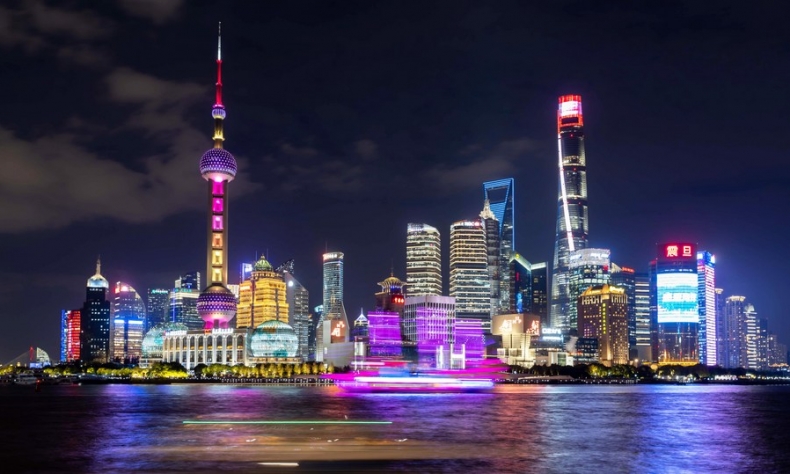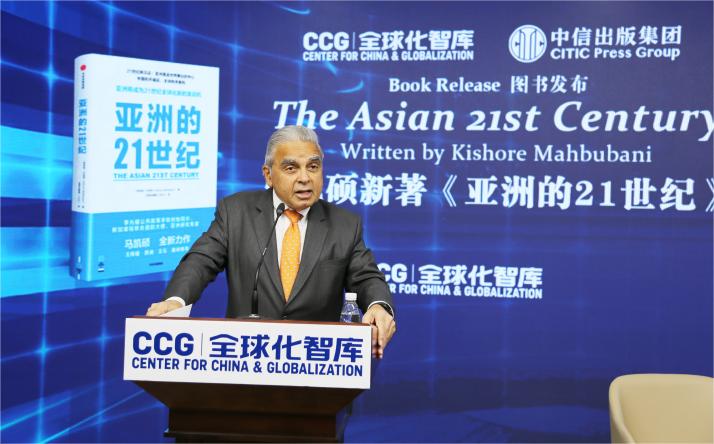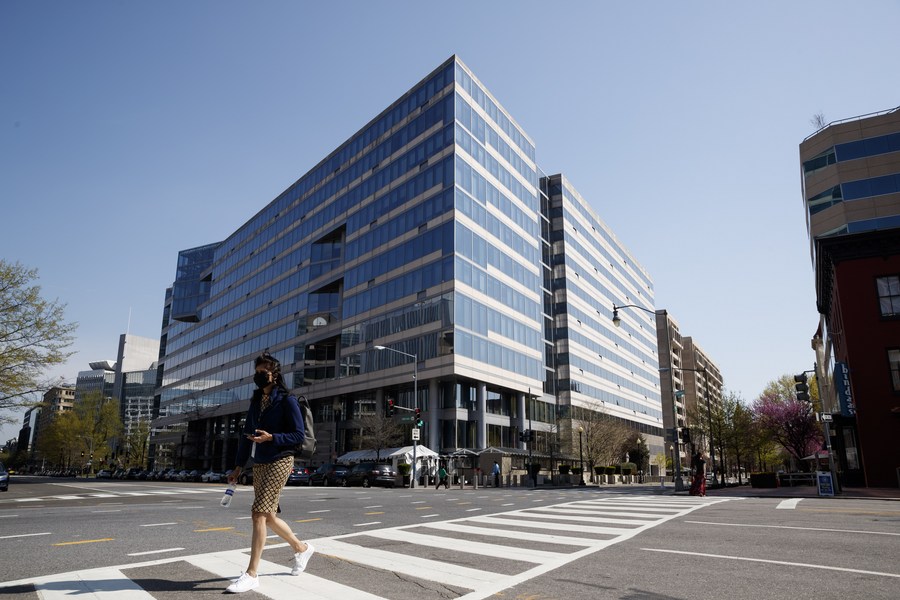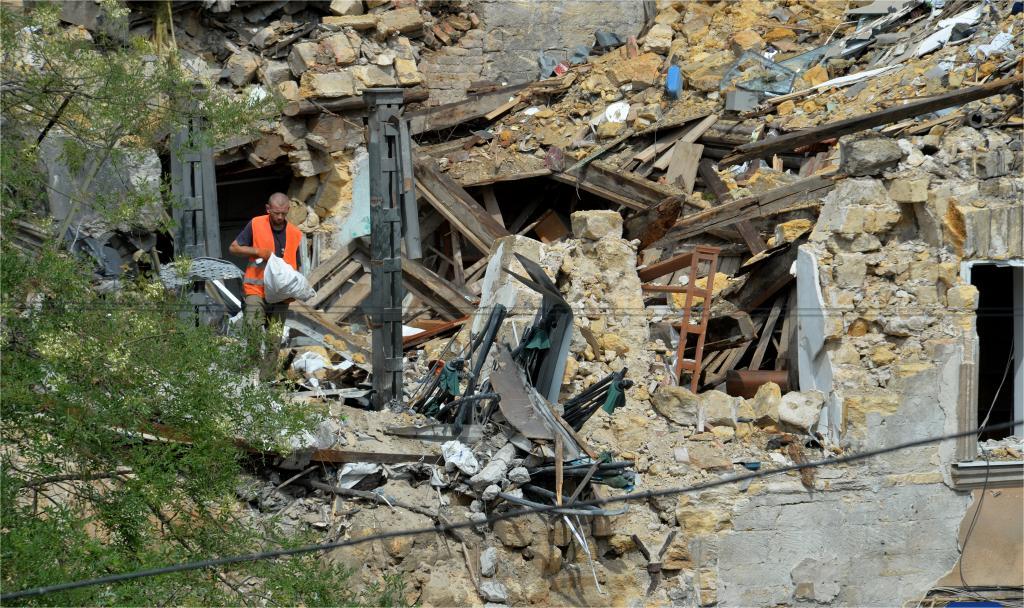The Asian Century: Underreported yet Undeniable

People get used to the power. There’s always a huge time lag. And that’s why the Western media also continues to pretend that the Asian century is not happening.
Is the 21st century the Asian century? If it is, will the West accept it? What challenges are Asian countries facing? These questions were raised and answered by Singaporean diplomat and academic Kishore Mahbubani at an event hosted by the Center for China and Globalization on July 18 to launch the Chinese edition of Mahbubani’s popular book The Asian 21st Century. In his 30-minute speech, the former Singaporean ambassador to the United Nations shared with the audience in Beijing why the remaining 77 years in this century belong to Asia. Edited excerpts of Mahbubani’s speech follow:

The rise of Asia
Why is the Asian century happening? There are many reasons for it. And the first and the most obvious one is that it is a perfectly natural development. If you look at the past 2,000 years of world history, in 1,800 of those years, the two largest economies of the world were those of China and India.
So it’s only in the last 200 years that Europe took off, and then North America took off. But the past 200 years of Western domination of world history have been an aberration and have been abnormal. What we are seeing in the 21st century is the exit of the abnormal and the return of the normal, where China, India and the other Asian countries are once again emerging as the largest economies in the world.
This is all a result of the fact that, for most of human history, Asian societies performed on par with European societies. Then, of course, something magical happened in the West. They had the renaissance, and they had the enlightenment. Other developments in the West leapt ahead of the rest of the world. And after leaping ahead, the West conquered the whole world.
But that’s the past, and now Asians make up the majority of the world’s population, 55 percent. And if they perform on par, they will have the largest economies in the world. So that’s one reason: They returned to normal.
The other reason is that the Asian societies have also learned from the West how to succeed. Asian societies have succeeded by having understood, absorbed and implemented seven pillars of Western wisdom, ideas like free market economics, mastery of science and technology, and the rule of law.
But something absolutely strange is happening in the world today, which is again underreported: While the Asian societies are embracing some of the successful Western ideas, the West is walking away from its own successful ideas.
This is not an exaggeration. Just to give you an example, one thing the United States used to say in the 1980s when I was in the United States—I spent almost a decade there—was we must open up our economies, liberalize, and sign free trade agreements. The United States was pushing for free trade agreements in the 1980s, but today, the U.S. Congress cannot pass a single free trade agreement. Free trade is dead in the U.S. and the world’s largest free trade agreements are being signed here in East Asia.

In January 2022, the Regional Comprehensive Economic Partnership launched by the 10 Association of Southeast Asian Nations (ASEAN) members, China, Japan, the Republic of Korea, Australia and New Zealand took off. That’s an example of how things are changing. The world’s largest free trade agreements should have been created in the West, but they weren’t. And now Asians are doing so. This is true in many areas.
If you look at the trade statistics, the world’s largest trade flows are also coming from Asia.
You can see how all this is showing the shift of power to Asia. It’s very clear and I must emphasize that we are in the year 2023 with 77 years left in the Asian century. There’s a lot that’s going to happen over the next 77 years. And this is what this book does. It provides you a glimpse into that future that is coming.
Western reluctance
The second big idea is to explain the structural reasons why the West is reluctant to accept the idea of the Asian century. The structural reasons are a result of the fact that because of the past 200 years of Western domination of world history, the West occupies a lot of geopolitical space in the world. It controls many important organizations. It doesn’t want to give up its control, even though its power has diminished.
The most obvious example comes from the two largest, two most important economic organizations in the world, the International Monetary Fund (IMF) and the World Bank. They were created after World War II. At that time, this was an incredible achievement by the United States. The United States in the 1950s, with 5 percent of the world’s population, had a 50-percent share of global gross national product (GNP). That’s how powerful the United States was.
Now, the U.S. has come down. It’s still the number one economy. It maybe has 20 percent of the world’s GNP. Despite the fact that power has shifted, you still have a rule that says to become the head of the IMF, you must be a European; to become the head of the World Bank, you must be an American. And even though the most dynamic successful economies in the world are Asian economies, no Asian citizen can run either the IMF or the World Bank.

There was an important historical fact at the height of the global financial crisis of 2008-09. When the West was in deep trouble, they agreed that they would no longer dominate the IMF and the World Bank. Future heads of the IMF and World Bank would be selected on merit and not on the basis of geography. They made that commitment in 2009. Fourteen years have gone by, they have not fulfilled that commitment.
So in the IMF, especially, a country’s share of voting power should represent its share of the global economy. I can tell you as recently as 10 years ago, three small states, the Netherlands, Belgium and Luxembourg, had a greater voting share than China in IMF. Shocking. But even today, China’s share of global GNP is maybe 16, 17 or 18 percent. But China’s share of IMF voting rights is only 6 percent. It should not be 6 percent, it should be 16, 17 or 18 percent.
But the West will resist the change, because they don’t want to give up the power. The IMF will have a real problem when China becomes the number one economy in the world. Because, as Christine Lagarde said when she was head of the IMF, in the constitution of the IMF it says that the headquarters of the IMF shall always be in the capital of the largest economy in the world. That’s why it’s in Washington, D.C., but when China becomes the world’s largest economy, if the IMF tries to leave Washington, D.C., Washington, D.C. will explode.
These are examples of the structural reasons why the West doesn’t want to accept the Asian century. Because if they accept it, they have to learn to share power with the rest of the world. And they don’t want to. People get used to the power. There’s always a huge time lag. And that’s why the Western media also continues to pretend that the Asian century is not happening.
Developing in peace
The third big idea is that we in Asia, at the same time, should not be complacent. We still have a long way to go in our development. There can be threats, and there can be difficulties in our growth and development. For example, the biggest danger to growth and development in Asia is war. To develop, you must have peace.

So far, it’s amazing that since the end of the Cold War in 1990, the guns have been silent in Asia. That’s quite remarkable, by the way. When the Cold War ended, you will find in this book, The Asian 21st Century, I cite some Americans who say that Europe had the biggest wars in the past, and that World War I and II, and all that will be Asia’s future. At the end of the Cold War, everyone thought the wars would happen in Asia and Europe would be in peace.
Now 33 years after the end of the Cold War, Asia has been at peace, and Europe has been at war. You had the Yugoslav war, and now you have this massive Ukraine war. Wars are the result of geopolitical incompetence. All wars can be prevented, if you work hard to achieve a political compromise that is acceptable to all the parties. And an imperfect political compromise that delivers peace is better than a perfect war, which only destroys.
It’s important for Asia to learn a big lesson from the Ukraine war and make sure that nothing similar happens in our region. One organization that is genuinely underappreciated by everybody in the world, and even sadly, underappreciated in Asia is ASEAN. One of the key reasons why East Asia is at peace is the existence of ASEAN. It is a very weak organization. But because it is so weak, everybody trusts it. The convening power of ASEAN is phenomenal. By bringing the countries together, they have also helped to improve relations, and sometimes maybe even have prevented wars.
I want to focus on three fast growing parts of Asia, what I call the new CIA, which stands for China, India and ASEAN. This makes up almost 40 percent of the world’s population. Asia has now produced the world’s largest middle class population, which also means that the world’s largest markets will now be in Asia. This will be where people will come to seek growth and development. It is statistics like this that explain why the rest of the world understands that the Asian century is happening, and why the West still refuses to accept that the Asian century is happening.
 Facebook
Facebook
 Twitter
Twitter
 Linkedin
Linkedin
 Google +
Google +










